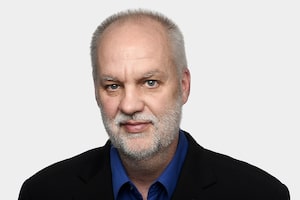British Columbia recently unveiled a “new to practice” contract for doctors. The provincial government is offering newly qualified family physicians almost $300,000 in compensation, plus a $25,000 signing bonus and up to $150,000 in student loan forgiveness over five years.
In return, the newly-minted doctor must join an established group practice, take on 800 to 1,250 new patients, commit to working 1,680 to 2,100 hours a year and assume a share of clinic overhead.
So far, there are no takers.
Desperate for family docs, virtually every province and territory has embraced some variation of this approach. They announce programs with great fanfare and send recruiters to medical schools and job fairs (at home and abroad) to whisper sweet nothings into graduates’ ears.
Some provinces claim the approach is working. Nova Scotia crowed that it attracted 160 new physicians last year, while PEI recruited 40. But fewer than half were family doctors. We don’t know if the new recruits will stay. Nor do we know how many physicians were lost in that same period.
While the health system is reeling from chronic personnel shortages exacerbated by the COVID-19 pandemic – not just doctors, but others including nurses and personal support workers – there is no national human-resources plan.
We don’t really have any idea how many or what kind of doctors are needed where. For the most part, provinces just poach workers from each other and from other countries, rather than engage in any actual planning.
Worse yet, governments tend to embrace last-minute, reactive “solutions” such as cash bonuses, rather than deal with fundamental structural problems that are the root causes of recruitment and retention difficulties.
The situation with family physicians is a case in point.
On the surface, the kind of deal B.C. is offering looks attractive. For your average working stiff, $300,000 a year for a 40-hour workweek, with extra cash to pay off debts, looks good. But the math isn’t that simple.
The $300,000 is not a salary; family docs must pay clinic overhead, which includes rent, supplies and support staff. That’s about one-third of gross earnings, and with rents and inflation soaring, costs are rising. Family docs can make more money working in a hospital than in a group practice, and they don’t pay overhead there.
Mind you, these salaried and semi-salaried positions can be an improvement on the more traditional fee-for-service model, where family physicians bill roughly $30-40 for each visit, and churn patients through every few minutes. As patients get more complex, that model is crumbling.
Instead of the occasional cash bonus, we need more fundamental reform with alternative payment plans that combine salary, fee-for-service and capitation (a fixed amount for each patient) models. Most of all, these contracts need to be adapted to individual needs – that may be the biggest barrier because the system has proven itself to be bureaucratic and inflexible.
We can’t make the mistake of thinking it’s just about money either.
Most people who go into medicine want to, well, practice medicine – not run a small business.
Furthermore, while physicians are contracted to work a set number of hours to see patients, there are usually many more hours in a day taken up by administrative work; completing electronic medical records, and co-ordinating care with specialists and social services, take extra time.
The shortage of physicians is particularly acute in rural and remote parts of Canada. Being a small-town doctor, the last rampart in an aging community, can be all-consuming. That’s why, increasingly, international medical graduates fill these positions. We license doctors trained in other countries on the condition that they go to the farthest reaches of the country. That’s not a sustainable plan; many of them decamp as soon as they complete their mandatory service.
It’s not just about training more family physicians domestically either. Barely half of family docs actually operate full-service practices any more. Instead, they opt to specialize – in addictions, emergency medicine or hospital care – or spend years doing temporary contracts (called locums).
For physicians, like everyone else, lifestyle matters. The younger generation is more aware of the importance of work-life balance. Good on them – but the system has been too slow to adapt to that reality.
Having a family doctor is important; ensuring every Canadian has a medical home should be a priority.
Instead of trying to bribe young doctors to practice medicine in a way that is untenable, politicians and policy-makers would do well to listen to the new graduates and fundamentally change the way primary care is funded and practiced.
That would benefit not only physicians, but their patients as well.
Keep your Opinions sharp and informed. Get the Opinion newsletter. Sign up today.
 André Picard
André Picard